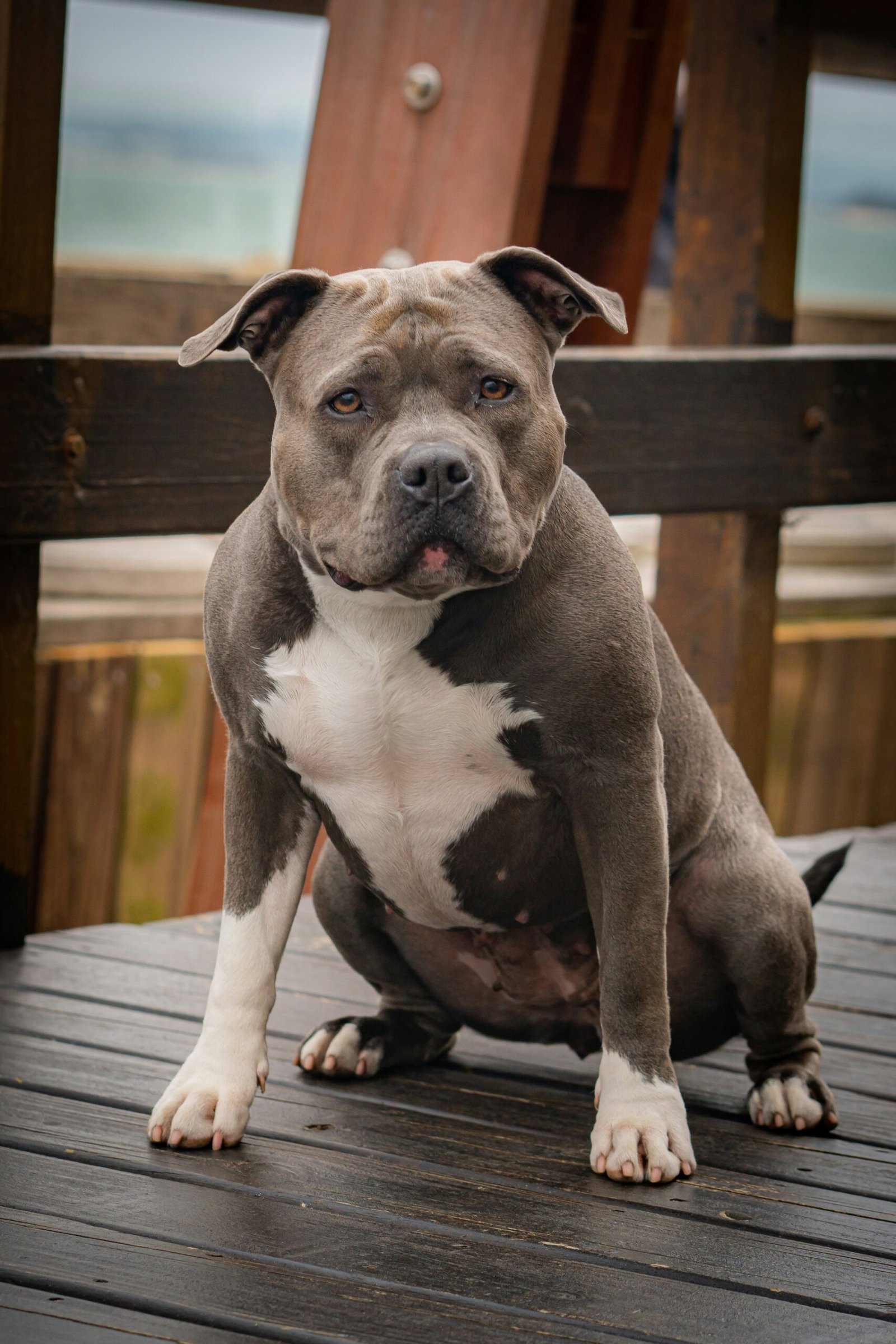Differences Between American Bullies and Pitbulls
The term ‘Pitbull‘ is often used colloquially to refer to several breeds including the American Pit Bull Terrier, Staffordshire Bull Terrier, American Staffordshire Terrier, and sometimes the American Bully.
However, significant differences exist between these breeds, particularly between American Bullies and American Pit Bull Terriers.
Physically, American Bullies are generally more muscular and stockier than American Pit Bull Terriers. American Bullies have a broader chest, thicker neck, and a more pronounced muscle structure.
On the other hand, American Pit Bull Terriers are typically leaner with a more athletic build. Genetically, while both breeds share some ancestry, selective breeding has significantly diverged their characteristics.
American Bullies were developed by crossbreeding American Pit Bull Terriers with other breeds to enhance their physical stature and temperament.

When it comes to breeding purposes, American Bullies were specifically bred for companionship and as show dogs.
They are known for their friendly demeanor and are generally less aggressive, making them suitable for families.
Conversely, American Pit Bull Terriers were originally bred for work tasks such as farming and hunting. This history has imbued them with high energy levels, agility, and a strong work ethic.
Behaviorally, these breeding practices have resulted in notable differences. American Bullies are often more sociable and easier to train, reflecting their role as companion animals.
They tend to be more tolerant and gentle, especially with children. American Pit Bull Terriers, while also capable of being affectionate pets, may exhibit higher levels of drive and determination. Their history of working roles can sometimes translate into a more assertive and stubborn demeanor.
Common stereotypes often paint both breeds as aggressive, but these generalizations are misleading. Proper training and socialization are critical in shaping a dog’s behavior, regardless of its breed.
It’s also essential to recognize the legal and social implications of owning either breed, as some regions have breed-specific legislation that may restrict or ban them.
Understanding the differences between American Bullies and Pitbulls is crucial for potential dog owners, breeders, and enthusiasts. These distinctions can significantly impact the suitability of each breed for various lifestyles and environments, helping ensure a harmonious and fulfilling relationship between the dog and its human companions.
Understanding the American Bully Breed
The American Bully breed, first developed in the United States during the 1990s, is a result of crossbreeding the American Pit Bull Terrier with the American Staffordshire Terrier and the Bulldog.
This intentional blend aimed to create a companion dog with a robust physique and a gentle temperament. The American Bully quickly gained recognition for its distinct physical and temperamental traits.

Physically, the American Bully is characterized by its muscular build, broad chest, and distinct head shape. These dogs exude strength and athleticism while maintaining a balanced and compact frame.
Their coats are short and smooth, coming in various colors and patterns. The breed is categorized into four recognized types: Pocket, Standard, Classic, and XL.
The Pocket American Bully is the smallest of the four, standing between 13 to 17 inches tall but retaining the breed’s characteristic muscularity. The Standard American Bully, the archetype of the breed, stands between 17 to 20 inches tall, exhibiting a balanced and proportionate physique.
The Classic American Bully, although similar in height to the Standard, features a lighter frame and less exaggerated muscular features. Lastly, the XL American Bully is the largest, standing between 20 to 23 inches tall, with a robust and imposing presence.
Temperamentally, the American Bully is known for its affectionate, loyal, and good-natured personality. These dogs are often described as excellent companions, thriving in family environments due to their friendly and sociable nature.
Despite their intimidating appearance, American Bullies are generally gentle and patient, especially with children. They are also highly trainable and eager to please, making them suitable for various roles, from family pets to therapy dogs.
The popularity of the American Bully breed has surged in recent years, partly due to their appealing characteristics and versatility. However, misconceptions about their behavior and aggression persist.
It’s essential to understand that behavior is influenced by training, socialization, and environment rather than inherent breed traits. Properly raised American Bullies are typically well-behaved, friendly, and loving animals.







